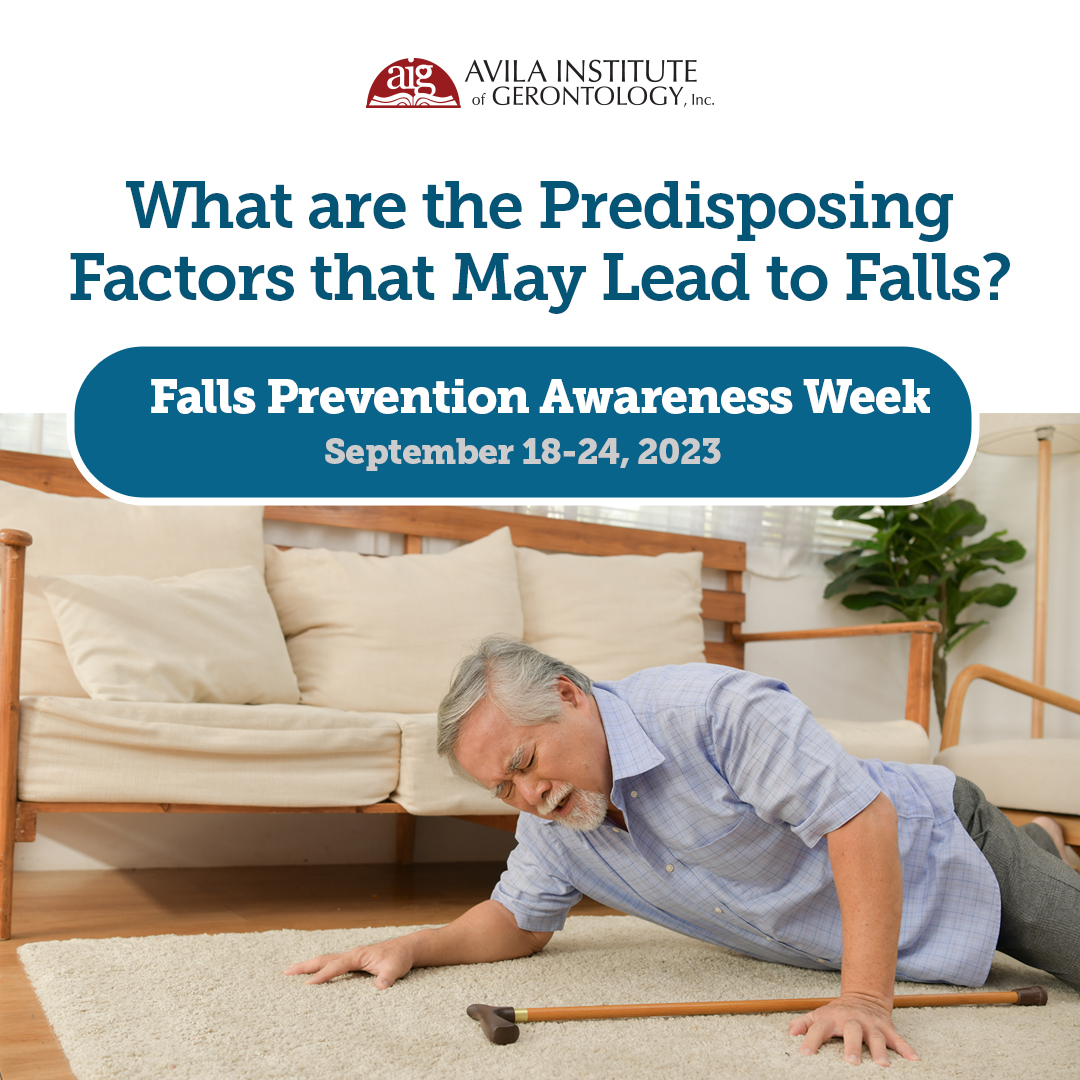
Individuals 65 and older have a high tendency to fall. These falls can cause injuries that increase the rate of mortality and significantly decrease the quality of life. There are many predisposing factors that may lead to these falls, and it is important to understand and evaluate risk factors that can help to decrease or even prevent falls.[i]
Some outcomes of falls, such as head injuries and ICU admission, had a strong association with increased mortality. Physical therapy or occupational therapy found to be a strong factor to decrease fall recurrence. Knowing the main common mechanism of fall can aid health care providers in their approach in order to treat and prevent dangerous outcomes of falls such as fractures.
The greatest predictor of falls is previous falls. The following are things you might consider to assess the fall risk for someone who either has had a history of falling, has a chronic disease causing frailty, or multiple chronic diseases which may cause frailty or polypharmacy issues:[ii]
- Age: Increased age is associated with decreased reaction time, particularly in step initiation and execution timing.
- Gender: In most elderly individuals, women fall more often than men.
- Race: Studies show that Caucasians fall more often than Africans, Caribbeans, Hispanics, and South Asians.
- Medications: If more than four medications are taken, the risk of falls is raised significantly. The use of benzodiazepines in the elderly increases the risk of night falls and hip fractures by 44%. Medications such as antiarrhythmics, digoxin, diuretics, sedatives, and psychotropics also increase the risk of falling substantially.
- Solitary lifestyle: Living alone appears to be a risk factor in falls. Injuries and consequences can be increased if the fallen individual cannot get up from the floor.
- Medical conditions: Medical conditions associated with an increased risk in falls include vascular diseases, arthritis, thyroid dysfunction, diabetes, depression, and chronic obstructive pulmonary disease. Vertigo and incontinence are common in populations with falls.
- Impairment in gait and mobility: After the age of 30, strength and endurance decrease by 10% per decade. When strength, power, and endurance are decreased, a slip or trip can turn into a fall. Any lower limb disability can increase the risk of falling, and difficulty rising from a seated position in a chair is associated with an increased risk as well.
- Immobility/deconditioning: Sedentary individuals fall more than those who are relatively active.
- Fear of falling: Among individuals with a recent fall, up to 70% report fears of falling. Of these individuals, 50% may limit or exclude physical or social activity because of this fear, thereby increasing their fall risk.
- Poor nutrition: Deficiencies in nutrients can result in low body mass index, which is associated with an increased risk of falls. Vitamin D deficiency can result in muscle weakness, osteoporosis, and impaired gait patterns.
- Cognitive disorders: Dementia, poor memory, and a score of under 26 on the Mini-Mental State Exam are all related to an increased risk of falls.
- Impaired vision: Glaucoma, cataracts, visual acuity, the field of vision, and contrast sensitivity lead to an increased risk of falls.
- Foot issues: General pain when walking, calluses, long toe deformities, ulcers, and nail deformities increase balance difficulty and risk of falling.
Environmental factors correlated with falls include poor lighting, uneven surfaces, and floors that are slippery. Studies show that these factors account for 30-50% of falls in this population.
A physical examination should correlate to the abovementioned causes of falls and be tailored to the patient's history of present illness. Blood pressure and postural changes can rule out orthostatic hypotension. Examination of the feet can point to any foot deformities. A targeted neurological exam may reveal visual acuity deficits or eighth cranial nerve deficits that can point to possible vestibular issues. Manual muscle motor testing can point to generalized or lower extremity weakness.
Because patients with difficulties with basic or instrumental activities of daily living (ADLs) are at increased risk of falling, assessment of the patient's functional status should be completed in detail. Assessment of basic ADLs should include bathing, toileting, dressing, feeding, grooming, and ambulation. Assessment of instrumental ADLs should include shopping, cooking, managing their own finances, telephone use, laundry, housekeeping, and transportation. Asking patients about any difficulties completing these activities can provide valuable information.
Exercise programs help prevent falls with no differences between types of exercise interventions, including endurance, platform balance, tai chi, resistance, and flexibility.
- Tai chi is a time-honored martial art that involves slow, rhythmic movements, including rotation of the trunk, shifting weight, coordination, and a gradual progression to narrowing the lower extremity stance. It has gained recognition as a good exercise choice. Studies have shown tai chi improves postural stability more so than other exercises. It also offers multiple musculoskeletal and cardiopulmonary benefits. Patients with a history of fractures are unfortunately not candidates for participation in tai chi.
- Balance focused exercises, specifically walking heel to toe or standing on one foot, in combination with coordination exercises, are also proposed for fall prevention.
All medications should be reviewed in patients with falls. Particular attention should be paid to patients who receive four or more medications and to those taking psychotropic medications, as these medications have specifically been linked to a strong chance of a future fall. The use of antidepressants, sedatives, hypnotics, and benzodiazepines demonstrates a significant correlation to falls in elders. Side effects of specific medications and interactions between medications are a potential reason for falls in the elderly. In medicines that could be attributed to causing falls, the risks and benefits of continuance must be carefully evaluated, and any unnecessary medications should be discontinued.
[i] Meshari Atta, et al; Common Types of Falls in the Elderly Population, Their Associated Risk Factors and prevention in a Tertiary Care Center; Cureus 13(5)
[ii] Michael K. Appeadu; Bruno Bordoni; Falls and Fall Prevention In The Elderly; [Updated 2023 Feb 20]. In: StatPearls [Internet]. Treasure Island (FL): StatPearls Publishing; 2023 Jan.
Disclaimer: This information is intended for educational purposes to health care professionals only and not to be used as a substitute for complete medical training in one of the health care professions. Information contained in this presentation is not intended or implied to be a substitute for professional medical advice. Always seek the advice of a physician or other qualified health provider for all medical problems, treatments, prior to starting or initiating any new treatment or with any questions you may have regarding a medical condition.
The Avila Institute of Gerontology, Inc. does not assume any liability for the information and data contained in this presentation or any diagnosis or treatment made in reliance thereon. Do not rely upon any of the information provided by this presentation for medical diagnosis or treatment. Any medical or other decision should be made in consultation with a qualified health care provider.
